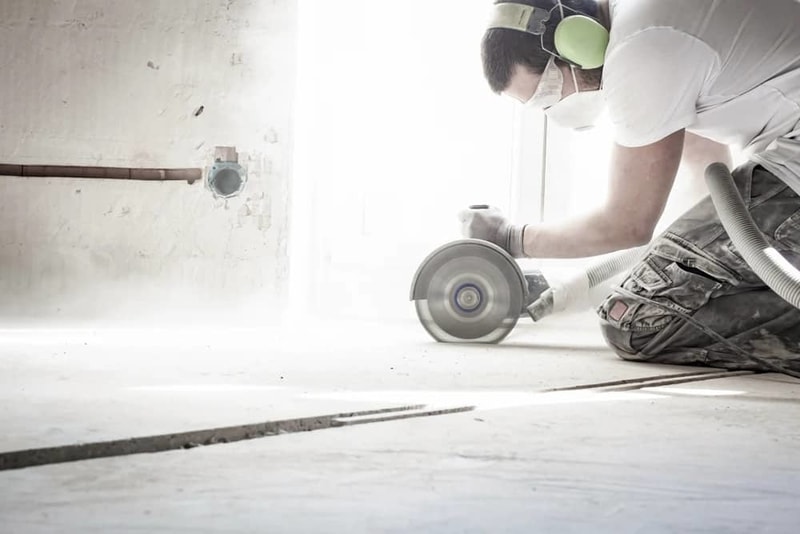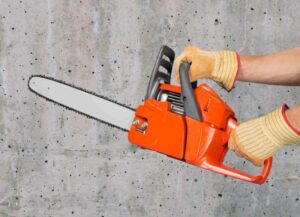Types of Diamond Blade
Are you a craftsperson who constantly needs to cut through hard or abrasive materials, but have difficulty doing so with a regular saw blade? Sure, regular blades can get the job done but they tend to leave rough edges or chipping. This means that your finished product will be less visually pleasing and possibly even less functional! What you need for jobs like this is a diamond blade.
There are three types of these diamond blades to choose from: the segmented rim blade, the turbo rim blade, and the continuous rim blade. Diamond blades make the cutting of materials such as granite, marble, asphalt, concrete, etc. so much smoother! You can also choose between soft and hard bond blades. Which diamond blade you use will depend on the job you are trying to get done.
We’re here to help you find the best diamond blade for your needs. Follow along with us as we explore the various types and what they are best suited for!
What is on a diamond blade?
Diamond blades are saw blades that have synthetic diamonds fixed to the cutting edge. Technically, it is more of a grinding edge, as these blades do not cut so much as precisely grind the hard materials away. These embedded diamonds create the cutting teeth of the saw and make it easier to cut through harder materials. The most common type of diamond blade contains a supportive steel core and exposed diamond segments. These segments are created by bonding synthetic diamond crystals with metal powder.
The diamonds used in these blades are always going to be synthetic because they can be more easily controlled in the manufacturing process to achieve the best possible quality. The ability to control these elements will allow for better cutting speed and the ability to extend the life of your blade. Some things to consider with the diamonds in the segments:
- The more diamond bits embedded means higher horsepower needed to run the saw.
- The quality of the diamond will determine the ability of the saw to resist heat (VERY important) and stay sharper for longer.
- The size of the diamond will determine the best application for the saw; finer diamonds are better for super-hard materials and coarser diamonds are more suited for softer hard materials.
How many different types of diamond blades are there and what are they best for?
Within the world of diamond blades, there are large varieties of types of blades. The three main types are the segmented rim, the turbo rim, and the continuous rim. Each of these blade types will get the job done, but each is better suited for specific kinds of work and materials.
What is a segmented diamond blade?
The segmented rim diamond blade is one that is divided into 10-14 segments, leaving deep grooves between each. This allows for airflow between the segments, aiding in the cooling of the blade when dry cutting, plus it helps blow off the debris. Because of the design of this blade, it is better suited for working with materials like concrete, stonework, brick, and asphalt.
What is the difference between the segmented and turbo rim diamond blades?
The turbo rim diamond blade is similar in design to the segmented rim in that it has sections plus little relief holes to create airflow and heat transfer. These blades can be run dry or wet, and while they will work for the same materials as a segmented rim, they can also handle harder limestone materials. The fewer number of sections in the turbo rim gives you a much smoother cut on your edges than you could get with the segmented rim. This blade type is going to be the fastest running of the diamond blades, which is why it’s often referred to as the turbo blade!
What is a continuous rim diamond blade?
Lastly, we have the continuous rim diamond blade. This one has also been known to be called the wet blade, as it requires being run with water flowing over it to cool and rinse off the debris. Because of this, it is also one of the slowest cutting blades. There are no breaks in this type of rim, which makes it perfect for achieving those clean edges and perfect finishes. These continuous rim blades are perfect for materials such as marble, tile (ceramic or porcelain), and granite.
What are hard bond and soft bond diamond blades?
The “bond” here is in reference to the mixture of metal powders used to create the diamond segments in these diamond blades. These bonds, when done properly and used properly, will hold the diamond in place just long enough to get the most possible use out of it before getting rid of the worn diamond and revealing a new one. The use of different kinds of metals will create different situations for what to use your diamond blade on. For example, a soft bond diamond blade is created using soft metals like bronze, which will give the blade a slightly yellow tint in the segments. These are great for cutting hard yet less abrasive materials such as porcelain tile. Hard bond diamond blades, on the other hand, use metals like tungsten carbide. These are perfect for more abrasive materials like concrete or asphalt. Remember, when it comes to the bonds in your diamond blade, opposites attract.
Whether you are new to the world of diamond blades or an old pro, it’s always nice to get a quick recap of what all you have available at your fingertips to get the perfect tool for your job. Being able to make informed choices helps to create the best final product, as well as ensure the longevity of your diamond blade. We aim to provide you with the best tools on the market, so check out our stock of diamond blades today!
Diamond Blade Features: And Now You Know
A diamond blade is invaluable when cutting hard or abrasive surfaces. Available in all manner of shapes with various features, this is a tool that is as versatile as it is rugged.
Interested in more outstanding construction blog insights? Check out some of our other articles, or get in touch to find out about our extensive range of bricklaying, grounding and cutting tools, today!




